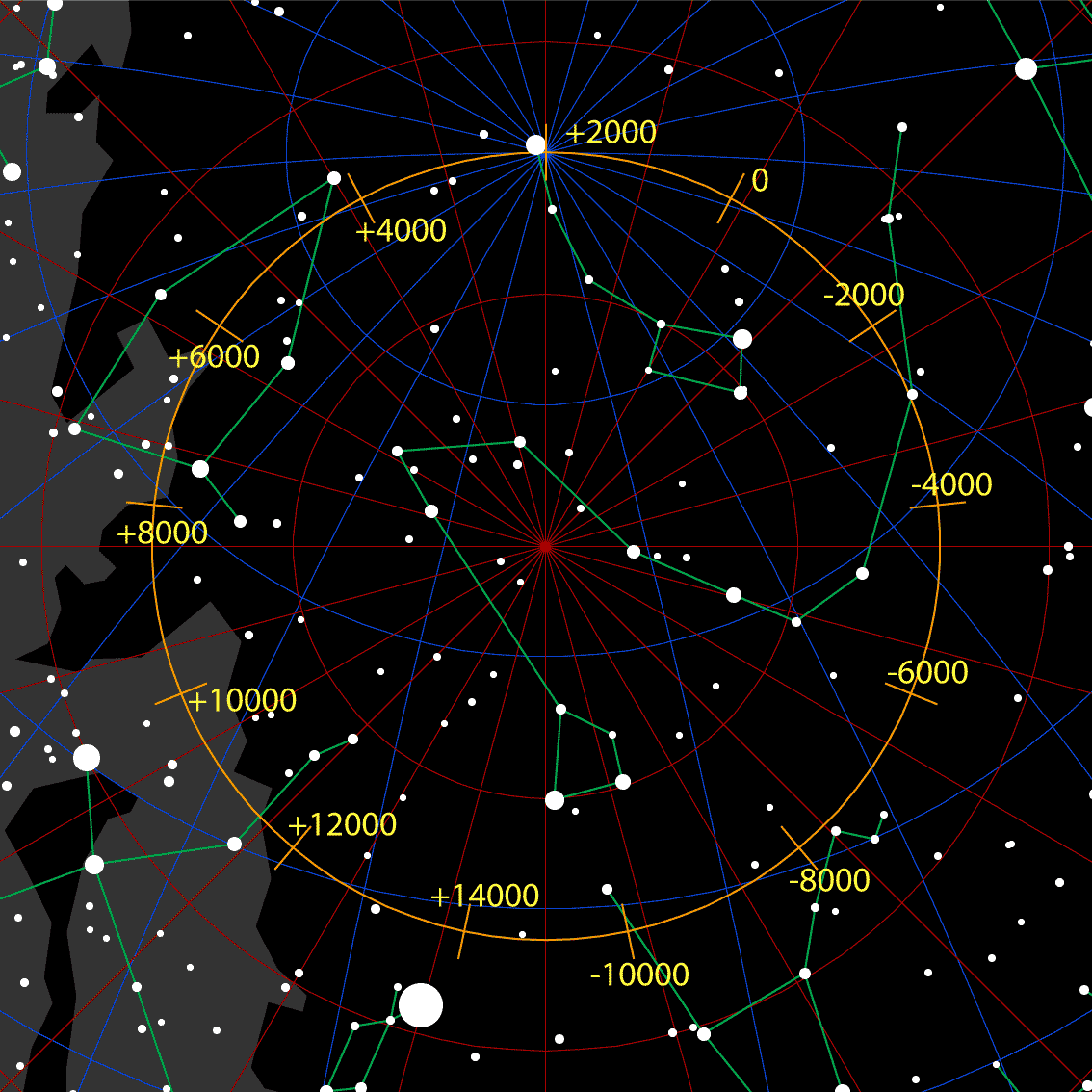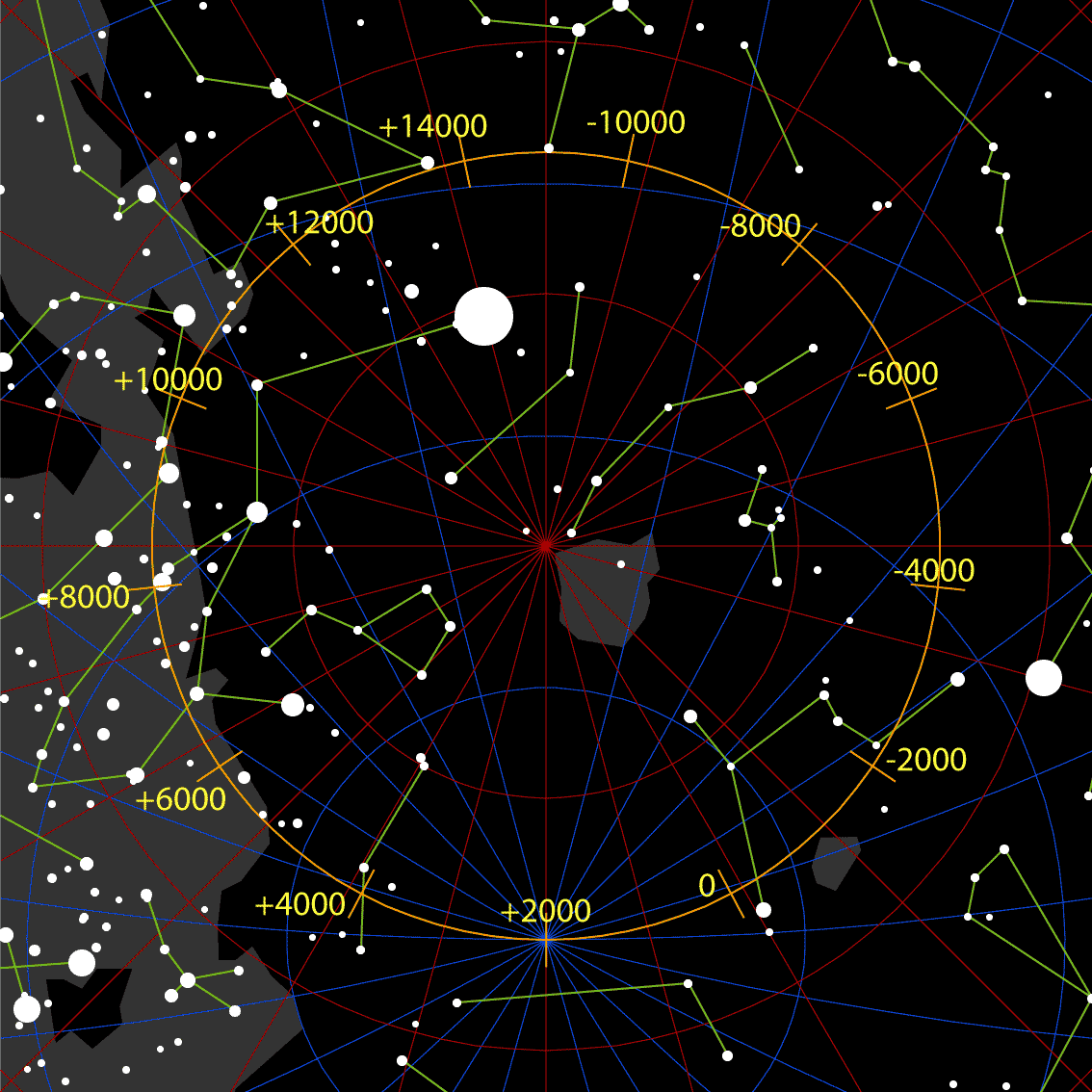The importance of the North Star, Polaris, is so great we use it as a metaphor for something that reliably guides us; it’s aspirational enough for companies to name themselves after it. In the days of GPS, its use may have declined, but memories of its importance linger on. However, there is no equivalent South Pole star, raising the question of why not?
The simple answer is timing, but a fuller explanation requires an explanation of what a pole star is.
What’s A Pole Star?
If you look at the sky one night, and then look again hours later, or at the same time on a different night, you will notice the stars have moved – all except one. That is, if you are in the Northern Hemisphere. If you’re in the south, they will all seem to have moved. A long exposure camera image will reveal the trails of the stars’ movements, all curving around a single point.
Of course, the stars themselves have not moved, at least not sufficiently for you to be able to tell at their vast distances without very precise instruments. Instead, the Earth has turned, changing star’s locations relative to Earthly objects, the horizon included
Meanwhile, Polaris, at the tip of Ursa Minor’s tail won’t seem to have budged, at least to the naked eye.
The reason is that the Earth spins on an axis, which points due north and south, to spots we call the North and South Celestial poles. The Earth’s turning does make Polaris appear to rotate around the North Celestial pole, but they’re so close the movement is imperceptible.
That, however, is sheer coincidence. The universe was not made for us, and the closeness of Polaris to the celestial North Pole is just a matter of luck. No such luck blesses the Southern Hemisphere. Telescopes reveal stars near the South Celestial Pole, but they’re far too faint to see by eye alone. Under dark skies, people with excellent eyesight can just make out Sigma Octantis, a little over a degree from the South Celestial Pole, but telling it apart from other faint stars is almost impossible, so pretty hard to navigate by.
Exactly how close a star needs to be to a Celestial Pole to count as a pole star is up to us to decide, but if it’s within 5 degrees it will be seen as stationary.
Polaris is less than three-quarters of a degree from the North Celestial Pole, as well as being the brightest star in Ursa Minor. Octans is such a dud of a constellation it doesn’t provide anything decently visible within 10 degrees of the South Celestial Pole, let alone 5.
The North Star is not permanent
If the presence of a handy North Pole Star is causing you to question the statement about the universe not being made for us, be aware that Polaris is far from permanent. The Earth undergoes a precession like a slowing top on a timescale of 26,000 years.
This causes the planet’s axis to conduct a loop on the same timescale so that it points at different parts of the sky, the Celestial Poles moving with it.
Three thousand years ago there was no convenient pole star. Beta Ursae Minoris was the closest easily visible star, but it was almost 7 degrees from the pole.
If civilization has fallen in another thousand years, our descendants will have to find north using some very second-rate stars. Alternatively, like the inhabitants of the Southern Hemisphere today, they’ll have to draw lines between stars and try to work out where they meet.
Indeed, for most of the long cycle the Northern Hemisphere will lack a decent pole star. On the other hand, by 12,500 years from now, Vega, the fifth brightest star in the sky, will sneak within the 5-degree circle of the North Celestial Pole.

The path of the north celestial pole relative to 0 CE/BCE, showing how rare it is to have a bright pole star
On the other hand, in 12,000 years’ time, the South Celestial Pole will pass by the even more magnificent Canopus, second only to Sirius in brightness.
Why Do Pole Stars Matter?
For most of human history, it’s been hard to find direction when traveling through unfamiliar territory. Even when compasses and sextants were invented, they were the preserve of the privileged few. Having a pole star to guide one was very useful if you needed to travel north or south, and at least some help for heading in other directions.
The most famous example is the advice given by Harriet Tubman and other “conductors” on the Underground Railway for escaping slaves to travel at night and learn to recognize the Pole Star and follow it north.

A Tasmanian Indigenous story tells of a bright star in the south that never moves, but that has not been the case for a very long time.
The cyclic nature of the Celestial Poles’ rotation through the sky means Canopus was the Southern Pole star 14,000 years ago as well, albeit beyond the 5-degree mark. Indigenous Australians did not need to follow it to freedom, but there is some evidence it was still so useful its former location remained part of Indigenous Tasmanian lore until European arrival. If true, this may represent the oldest surviving story on Earth.
Source Link: Why Does Earth Have A North Pole Star But No South Pole Star?